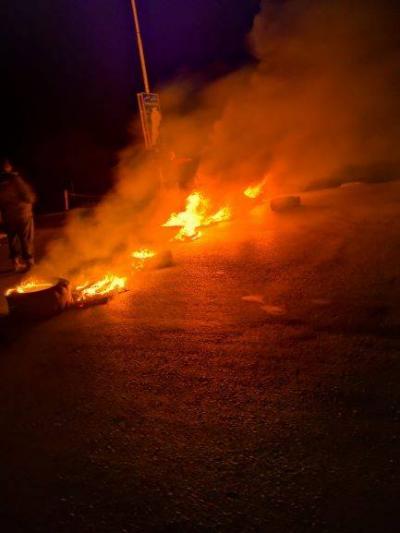Several regions in Lebanon recently experienced road blockades and protests over difficult living conditions and rising dollar prices.
The National News Agency reported that protesters blocked the highway from Bawwar to Aaqiba, Kesrouan, and the Ibrahim River using burning tires, protesting against tough living conditions and the rise in dollar prices amid the presence of security forces. Additionally, a group of young protesters in Sidon blocked the Americans' road in the Vilat and Al-Fawar Al-Hamshari areas, voicing their discontent over the increase in the dollar's value and worsening economic conditions.
In another protest, young people blocked the highway from Tannourine to Batroun at the intersection of the Bsatins Al-Asi, expressing their frustration about living conditions while chanting against the "ruling majority." An official from the National News Agency also reported that some youths closed the Kfar Rumman roundabout with iron barriers this evening, protesting the rise in the dollar exchange rate and the deteriorating living situation.
Protesters set fire to tires in the middle of the road, resulting in the closure of the Nabatiyeh-Zahrani-Merjeyoun highway in both directions. They chanted against the Governor of the Central Bank of Lebanon and the political leaders who have driven the country to bankruptcy and hunger. In Rashaya, protesters blocked the main road from Rashaya to the border at Dar Al-Hanan triangle with stones and burning tires.
Furthermore, in the Chouf region, protesters blocked the main road at the intersection of Sarjbal-Kfarhim-Deir El-Qamar-Baaklein at night, igniting tires and placing stones in the middle of the road. After their initial road blockage in Kfarhim, the protesters moved to the Sarjbal intersection, halting traffic on the routes from the villages of Wadiya and Jahlieh.
For its part, the "October Meeting" issued a statement calling for the mobilization of all streets and squares to regain the right to life and future. It emphasized the demands of the popular movement, particularly calling for the formation of an independent government with legislative powers to lead the transitional phase and organize parliamentary elections on time.




